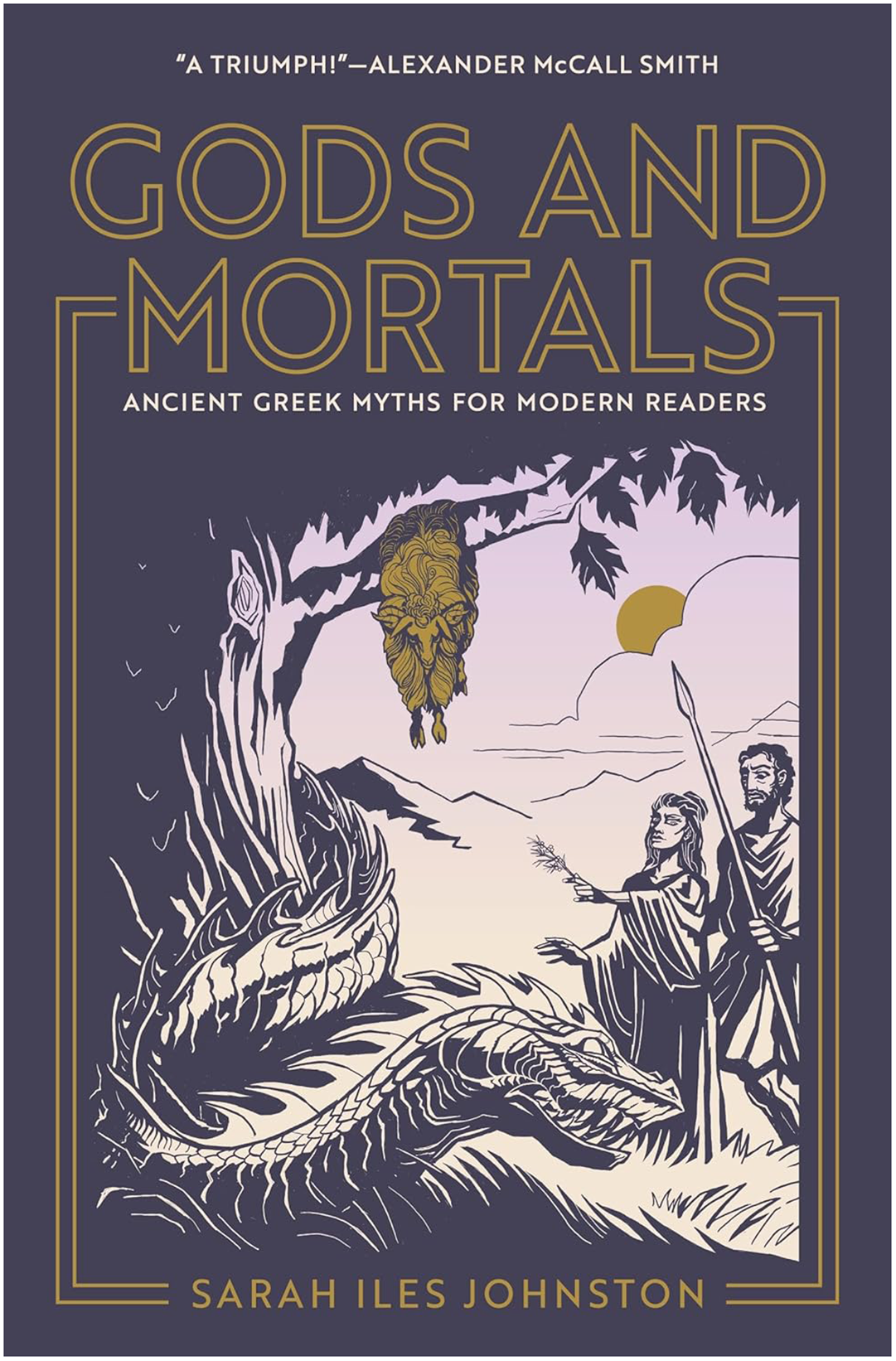
Sarah Iles Johnston’s Gods and Mortals: Ancient Greek Myths for Modern Readers is a fresh and engaging retelling of Greek myths, designed to make these ancient stories resonate with modern audiences. As a distinguished scholar of ancient religion and mythology, Johnston blends rigorous academic insight with accessible storytelling, offering a collection that is both informative and enjoyable. The book is particularly valuable for students and teachers, as it not only recounts well-known myths, but also provides context, interpretation, and historical significance.
Gods and Mortals presents a selection of Greek myths, retold in a way that emphasizes their literary and cultural significance. Johnston organizes the book thematically, grouping myths around gods, heroes, and mortals to illustrate broader themes such as power, fate, and divine intervention. The retellings maintain fidelity to ancient sources while incorporating a narrative style that makes them more accessible to contemporary readers. Johnston also provides commentary on the origins and variations of the myths, tracing their evolution from antiquity to modern interpretations.
In addition to the familiar tales of Zeus, Athena, and Prometheus, Johnston includes lesser-known myths, offering readers a more comprehensive understanding of Greek mythology. She frequently references ancient authors such as Hesiod, Homer, and Ovid, situating the myths within their literary and historical contexts. The book also explores how these myths were adapted and reinterpreted over time, making it a useful resource for students studying the reception of classical mythology.
Johnston’s approach balances storytelling with scholarly analysis. She does not merely retell myths but also considers how they were understood in ancient times and how they have been reshaped by later cultures. Her interpretations often highlight the psychological and sociopolitical dimensions of the myths, providing insights into the values and anxieties of ancient Greek society. One of the book’s strengths is its ability to make Greek myths feel relevant to contemporary readers. Johnston avoids overt modernization but subtly draws connections between ancient themes and present-day concerns, such as justice, morality, and the nature of power. Her analysis is particularly strong in its exploration of the gods’ complex personalities and their interactions with mortals, showing how these relationships reflect human struggles with authority and destiny.
Johnston’s writing style is clear and engaging, making the book accessible to both general readers and students new to Greek mythology. Unlike some academic works that assume prior knowledge, Gods and Mortals provides sufficient background to help readers understand the myths’ significance. The storytelling is vivid yet retains the depth necessary for educational use, striking a balance between readability and intellectual rigour. For teachers, the book offers an excellent way to introduce students to Greek mythology without oversimplifying the content. Johnston’s interpretations encourage critical thinking, prompting readers to consider different perspectives on well-known stories.
A key strength of Gods and Mortals is its use of ancient sources. Johnston frequently cites primary texts, offering readers glimpses into the original language and structure of the myths. She also draws on modern scholarship, incorporating recent developments in the study of ancient religion and myth. This academic grounding enhances the book’s credibility and usefulness as a teaching resource. However, while Johnston provides ample historical context, some readers might find that her focus on storytelling sometimes overshadows deeper theoretical discussions. Those looking for an in-depth analysis of structuralist or comparative mythological approaches might need to supplement their reading with more specialized studies.
Compared with other recent books on Greek mythology, Johnston’s work stands out for its scholarly yet accessible approach. While authors such as Stephen Fry (Mythos) and Natalie Haynes (Pandora’s Jar) also reinterpret Greek myths for modern audiences, Johnston’s book is more firmly rooted in classical scholarship. Unlike Robert Graves’ The Greek Myths, which often prioritizes poetic retellings and speculative interpretations, Johnston remains closer to the historical and literary contexts of the myths. Her work is also more structured for educational use, making it a valuable addition to classroom reading lists.
Johnston’s retellings are vivid and well paced, making complex myths accessible to modern readers. The book is deeply informed by ancient sources and modern scholarship, ensuring accuracy and depth. By grouping myths around central themes, Johnston helps readers understand broader patterns in Greek mythology. The book serves as an excellent introduction to Greek mythology, providing both storytelling and analysis. While Johnston references various interpretations, she does not delve deeply into theoretical frameworks such as structuralism or psychoanalysis. Some readers may wish for a more critical engagement with the function and reception of myths across different historical periods. While the book covers a broad range of stories, certain myths and regional variations could have been explored in more detail.
Overall, Gods and Mortals is a compelling and well-researched book that successfully bridges the gap between academic scholarship and popular storytelling. Johnston’s ability to retell myths in an engaging yet historically grounded manner makes the book a valuable resource for students and teachers alike. While it does not offer in-depth theoretical analysis, its thematic structure and accessible style make it an excellent introduction to Greek mythology. Readers looking for a scholarly yet readable account of ancient myths will find this book both informative and enjoyable. For educators, Gods and Mortals provides an effective way to introduce students to Greek mythology while encouraging them to think critically about the stories’ meanings and historical significance. As a modern retelling that remains true to its ancient sources, Johnston’s work is a worthy addition to the growing body of literature on Greek myth and its enduring impact on contemporary culture.


